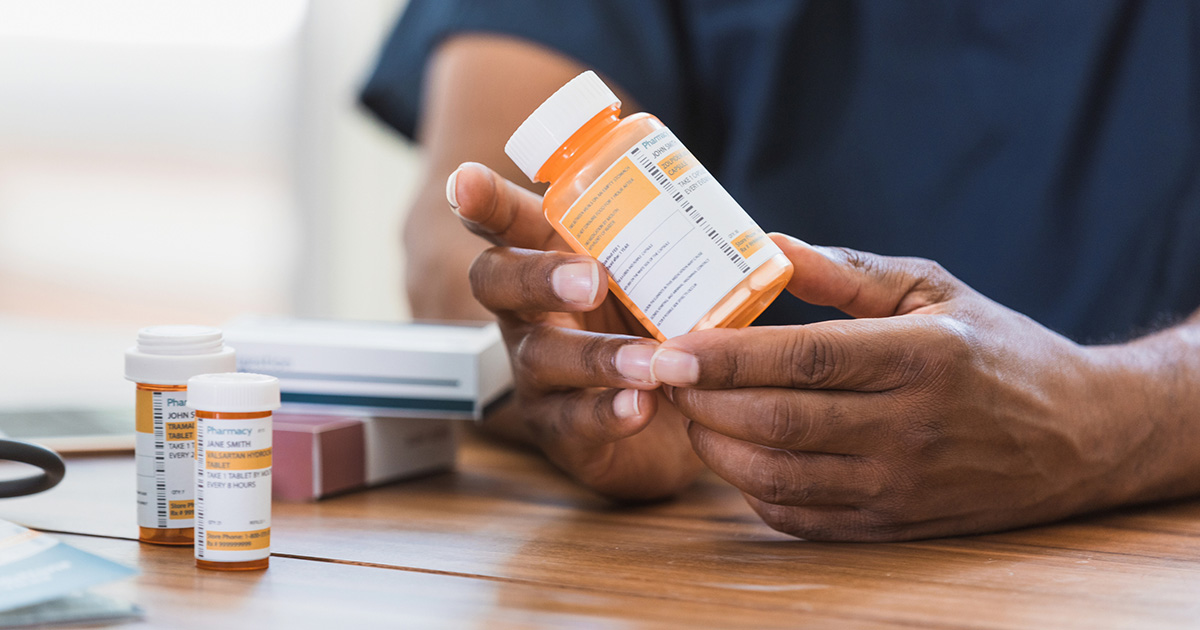We are amidst an epidemic—but this one isn’t caused by a virus or bacterium. Instead, our country is facing a prescription medication and illicit drug overdose epidemic. For context, in 2017, over 47,000 Americans died from an overdose involving opioids.[1]NIDA. (2022, January 16). Opioid overdose crisis. National Institutes of Health. Retrieved March 22, 2022, from https://nida.nih.gov/drug-topics/opioids/opioid-overdose-crisis More generally speaking, from October 2020-2021, a record number of 105,000 Americans died from drug overdoses.[2]CDC. (2021, November 17). Drug Overdose Deaths in the U.S. Top 100,000 Annually. National Center for Health Statistics. Retrieved March 22, 2022, from … Continue reading
Unfortunately, it doesn’t appear as if the epidemic will subside any time soon. Numbers have increased year after year, and now they’re competitive with other major health issues and tragic fatal accidents like car crashes.
The Value of Harm Reduction and MAT
With such a high death toll, our recovery community must place a significant focus on addiction recovery strategies that can save as many lives as possible. However, we have recently noticed a significant uptick in confusion among the general public when it comes to methods that can help curb addiction. Terms like “California sober” have been used by celebrities and other influential people to describe using so-called “less addictive” substances like alcohol more moderately to cut down on their opioid or narcotic use. However, while “going California sober” appears similar on the surface to actual, medically assisted therapies that take place in treatment, it is simply replacing one addiction with another without the benefit of professional guidance.
This is where we find it extremely important to advocate for valuable strategies like harm reduction and medication assisted treatment (MAT). With so much misinformation swarming through our public communication channels, it’s important that we differentiate between myths and facts regarding harm reduction and MAT. If understanding of these life-saving practices can be improved, more individuals and families will be willing to seek and receive the help they so desperately need.
What Is Harm Reduction?
Harm reduction is a combination of practical strategies and ideas to reduce the harmful consequences associated with drug use. It is also a movement for social justice built on a belief in and respect for the rights of people who use drugs. Rather than ignoring that society will always have a certain level of drug abuse issues, harm reduction chooses to accept this reality so we can minimize the physical, social, and psychological harms that result from drug use.[3]Logan, D. E., & Marlatt, G. A. (2010). Harm reduction therapy: A practice‐friendly review of research. Journal of clinical psychology, 66(2), 201-214. The ultimate goals of harm reduction tactics are to improve drug users’ health and well-being and reduce the injuries and deaths associated with drug use and problematic drug use behaviors.
Some common harm reduction strategies include:
- Providing sterile needles or syringes to people who inject drugs
- Offering free or low-cost testing for HIV and other STDs
- Making naloxone (a medication that can reverse an opioid overdose) more widely available
- Providing safe places for people to use drugs under medical supervision
- Offering counseling and other support services to people who use drugs
Despite what its critics may claim, harm reduction is not permissive. It does not condone or encourage drug use. Rather, harm reduction recognizes that people will use drugs anyway and seeks to incorporate public health strategies and policies that will reduce harm and prevent deaths. This has been a particularly challenging reality for myself and many others within the recovery community to accept—ultimately, however, opioid addiction kills, and the first step to restoring a serene, addiction-free life is to prevent drug-related deaths.
Finally, it’s important to note that harm reduction is not equivalent to California sober, as it is a real, research-backed strategy used to keep addicted individuals safe. Harm reduction is also not an abstinence-only strategy. Abstinence-only programs, or those requiring total abstinence from drug use to receive treatment, can be ineffective for some people addicted to prescription and illicit drugs—that’s why the treatment community has begun to accept non-abstinence goals.[4]Davis, A. K., & Rosenberg, H. (2013). Acceptance of non-abstinence goals by addiction professionals in the United States. Psychology of Addictive Behaviors, 27(4), 1102. Most importantly, as a recovery community, we recognize that people struggling with addiction should not be denied help simply because they are not ready or able to stop using drugs altogether. It is critical society comes to the same realization.
What Does MAT Stand for in Treatment?

Medication assisted treatment (MAT) uses FDA-approved medications to reduce cravings and prevent relapse, along with various counseling, mental health, and behavioral therapy sessions. MAT provides a holistic, whole-patient approach to treating dangerous substance use disorders.[5]Center for Substance Abuse Treatment, Substance Abuse and Mental Health Services Administration, (2009). Know your rights: Rights for individuals on medication assisted treatment. HHS Publication No. … Continue reading The FDA-approved drugs used in MAT are administered under a physician’s supervision and help to normalize brain chemistry, block euphoric effects caused by alcohol consumption or opioids, relieve physiological cravings, and stabilize mood. This treatment approach can be a viable solution for treating alcohol and opioid use disorders, and the CDC recommends it as the standard of care for these conditions.
Some common MAT strategies include:
- The use of methadone to treat opioid addiction[6]Faggiano, F., Vigna‐Taglianti, F., Versino, E., & Lemma, P. (2003). Methadone maintenance at different dosages for opioid dependence. Cochrane Database of Systematic Reviews, (3).
- The use of buprenorphine to treat opioid addiction[7]Gowing, L., Ali, R., & White, J. M. (2009). Buprenorphine for the management of opioid withdrawal. Cochrane Database of Systematic Reviews, (3).
- The use of naltrexone or acamprosate to treat alcohol addiction[8]Carmen, B., Angeles, M., Ana, M., & María, A. J. (2004). Efficacy and safety of naltrexone and acamprosate in the treatment of alcohol dependence: a systematic review. Addiction, 99(7), 811-828.
Differentiating Between Harm Reduction and MAT
Is MAT the same as harm reduction? Clearly, both incorporate the use of chemical substances for addicted individuals. However, the two techniques are different and should not be confused. While medication assisted treatment and harm reduction approaches seek to reduce the negative consequences of drug use, they do so in different ways. MAT is a treatment approach used in professional treatment to prevent overdose, alleviate cravings, and allow people to withdraw safely. It is designed to help people who want to stop using drugs. Harm reduction is a set of practical strategies authorities and others can apply to addicted individuals that aim to reduce the harms associated with drug use.
MAT is not an abstinence-only approach. Like harm reduction, MAT recognizes that not everyone is ready or able to stop using drugs altogether, and it seeks to provide a safe and effective way for people to manage their addiction. Additionally, similar to harm reduction, MAT is not permissive. It does not condone or encourage drug use. Instead, it is a treatment approach that seeks to reduce the crippling effects associated with addiction and help people get their lives back on track.
It is important to note that MAT takes place using physician-prescribed medications during professional addiction treatment, hence the “treatment” portion of its name. Individuals who believe they are “California sober” are not using approved medications, nor are they under the supervision of an addiction treatment professional. Even individuals who are using medications associated with MAT to curb cravings and handle withdrawals on their own are not technically in a MAT program. They are simply taking medications they believe support their recovery.
What Is a MAT Program?
As mentioned earlier, a true MAT program is an evidence-based medical treatment for addiction that combines behavioral therapy with medications to treat substance use disorders. These programs effectively reduce the use of illicit drugs and criminal activity. They can help to improve overall health outcomes and reduce the risk of relapse.
How does MAT treatment work? There are three main types of medications used in MAT:
Methadone
Methadone is a long-acting opioid that is taken orally. It works by binding to the same brain receptors as other opioids, but with a much weaker effect. This reduces the risk of overdose and dependence on the drug.
Buprenorphine
This medication is a partial opioid agonist that is taken sublingually (under the tongue). It also works by binding to the same brain receptors as other opioids, but with a much weaker effect. Buprenorphine has the power to reduce risk of overdose and decreases cravings.[9]Zoorob, R., Kowalchuk, A., & de Grubb, M. M. (2018). Buprenorphine therapy for opioid use disorder. American family physician, 97(5), 313-320.
Naltrexone
As an opioid antagonist that is taken orally, naltrexone works by blocking the brain receptors that other opioids bind to. This can significantly reduce fatal reactions and a decreased desire to continue taking drugs or using alcohol.[10]Minozzi, S., Amato, L., Vecchi, S., Davoli, M., Kirchmayer, U., & Verster, A. (2011). Oral naltrexone maintenance treatment for opioid dependence. Cochrane Database of Systematic Reviews, (2).
MAT programs can be especially beneficial for those of us who are addicted because they incorporate behavioral therapy. Therapy can help patients identify and change the thoughts and behaviors that contribute to their substance use. Many of us have found MAT to be a successful treatment option because it allows people to begin recovery from addiction and restore aspects of their everyday lives.
Tips for Anyone Considering MAT

If you or someone you know is struggling with addiction, there are a few things to keep in mind when considering MAT:
- MAT is not a quick fix. It’s important to remember that MAT is a long-term treatment option that can gradually improve your condition over time. The outcome has the power to be life-changing, but you must be patient as the process continues.
- Medication alone is not a replacement for holistic treatment. To be successful, MAT must be used in conjunction with other treatment options, such as behavioral therapy. If you have a dual diagnosis of substance use disorder (SUD) and another mental health disorder, you must be especially mindful of treating both conditions.
- MAT is not right for everyone. Some people may not be able to take medications due to other health conditions, while others may not respond well to the medications used in MAT. It’s important to talk to your doctor or discuss options with a recovery specialist to see if MAT is right for you.
- The decision to start a MAT program is a personal one. If your loved one is considering MAT and has discussed the option with a doctor or treatment professional, they must make the decision to seek treatment for themselves. Please be supportive of their individual path to recovery.
There is real value in seeking and entering treatment for addiction. If you or someone you know is struggling, please consider the many available resources and treatment options, including MAT. With the right help, recovery is possible.
Why Is It Important to Prioritize Finding a Recovery Option?
There are a few reasons why it’s vital to prioritize finding the right recovery option that works for you or your loved one:
Addiction Is a Progressive Disease
What may start out as occasional use can quickly turn into a full-blown addiction. Many people who develop an addiction do so because they’re trying to self-medicate, escape pain or trauma, or have progressed from social use of drugs and alcohol.
Your Personal and Professional Life Can Suffer
An addiction can quickly take over your life. It can ruin relationships, cause financial difficulties, and lead to job loss. Chasing relief can become the only thing that matters, and everything else falls by the wayside. Then, you may resort to using more to cope with the emotional stress of losing everything that was once important to you.
Your Health Will Deteriorate
Substance abuse takes a toll on your body. It can lead to organ damage, heart problems, cancer, and other physical ailments.[11]National Institute on Drug Abuse, (2020, July 13). Addiction and Health. NIDA Publications. Retrieved March 22, 2022, from … Continue reading In most cases, addiction can eventually become deadly. Overdoses are becoming more and more common as the opioid epidemic ravages the nation, and long-term use of drugs or alcohol is often a terminal condition.
Help Fight the Stigma Around Substance Abuse and Recovery

Medication-assisted treatment (MAT) is a whole-patient approach to the treatment of substance use disorders. It combines medications with counseling and behavioral therapies, providing a tailored approach to each patient’s needs. MAT is primarily used for treating addiction to opioids such as heroin and prescription pain relievers that contain opiates. The medication operates to normalize brain chemistry, block the euphoric effects of alcohol and opioids, relieve physiological cravings, and normalize body functions without the negative and euphoric effects of the substance used.
Although it’s been long believed that abstinence is best when it comes to recovery, it’s clear that many individuals who have severe chemical addictions may need medication to assist with their treatment.
Why stigmatize MAT if it helps people with their recovery?
References
| ↑1 | NIDA. (2022, January 16). Opioid overdose crisis. National Institutes of Health. Retrieved March 22, 2022, from https://nida.nih.gov/drug-topics/opioids/opioid-overdose-crisis |
|---|---|
| ↑2 | CDC. (2021, November 17). Drug Overdose Deaths in the U.S. Top 100,000 Annually. National Center for Health Statistics. Retrieved March 22, 2022, from https://www.cdc.gov/nchs/pressroom/nchs_press_releases/2021/20211117.htm |
| ↑3 | Logan, D. E., & Marlatt, G. A. (2010). Harm reduction therapy: A practice‐friendly review of research. Journal of clinical psychology, 66(2), 201-214. |
| ↑4 | Davis, A. K., & Rosenberg, H. (2013). Acceptance of non-abstinence goals by addiction professionals in the United States. Psychology of Addictive Behaviors, 27(4), 1102. |
| ↑5 | Center for Substance Abuse Treatment, Substance Abuse and Mental Health Services Administration, (2009). Know your rights: Rights for individuals on medication assisted treatment. HHS Publication No. (SMA) 09-4449. |
| ↑6 | Faggiano, F., Vigna‐Taglianti, F., Versino, E., & Lemma, P. (2003). Methadone maintenance at different dosages for opioid dependence. Cochrane Database of Systematic Reviews, (3). |
| ↑7 | Gowing, L., Ali, R., & White, J. M. (2009). Buprenorphine for the management of opioid withdrawal. Cochrane Database of Systematic Reviews, (3). |
| ↑8 | Carmen, B., Angeles, M., Ana, M., & María, A. J. (2004). Efficacy and safety of naltrexone and acamprosate in the treatment of alcohol dependence: a systematic review. Addiction, 99(7), 811-828. |
| ↑9 | Zoorob, R., Kowalchuk, A., & de Grubb, M. M. (2018). Buprenorphine therapy for opioid use disorder. American family physician, 97(5), 313-320. |
| ↑10 | Minozzi, S., Amato, L., Vecchi, S., Davoli, M., Kirchmayer, U., & Verster, A. (2011). Oral naltrexone maintenance treatment for opioid dependence. Cochrane Database of Systematic Reviews, (2). |
| ↑11 | National Institute on Drug Abuse, (2020, July 13). Addiction and Health. NIDA Publications. Retrieved March 22, 2022, from https://nida.nih.gov/publications/drugs-brains-behavior-science-addiction/addiction-health |




